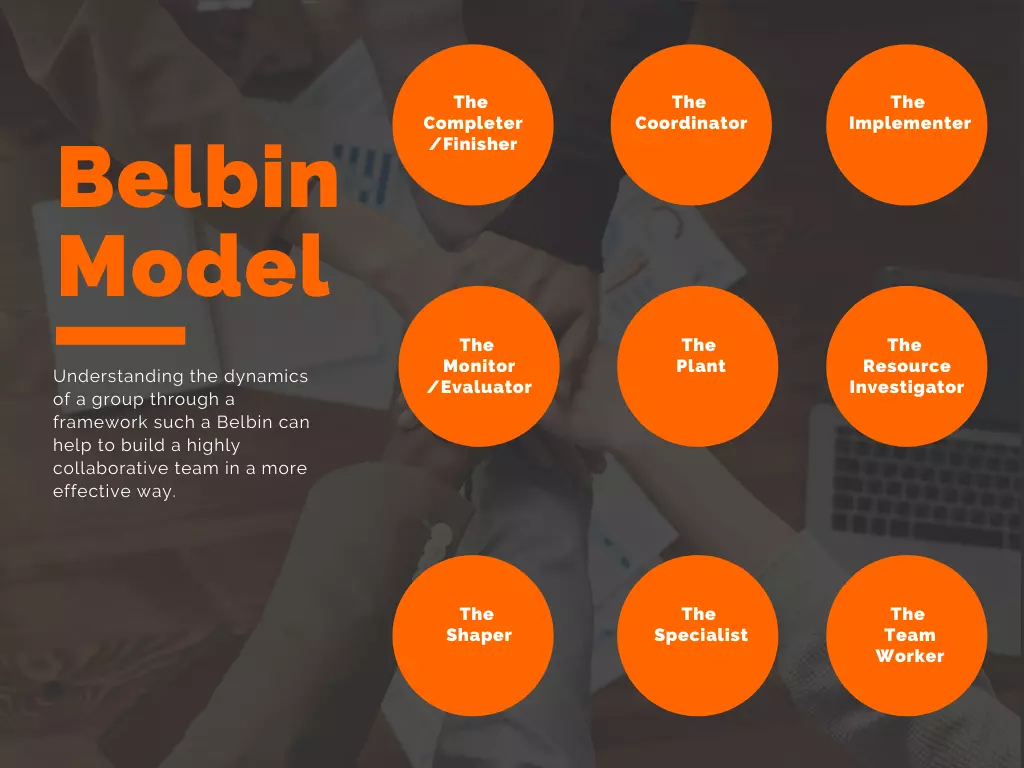Blending old ideas with the new to build a stronger team
- Blog Blending old ideas with the new to build a stronger team




Blending old ideas with the new to build a stronger team
Image source: Freepik
Blending old ideas with the new to build a stronger team.
Embracing a modern, Agile approach to software development projects is a powerful way to drive digital innovation within your organisation. However, if your team doesn’t include the right mix of talents and personalities, it’s going to struggle to perform no matter which working methodology you adopt. That’s where the more established Belbin team model comes into its own.
Creating an Agile team
The Agile methodology, launched in 2001, focuses on processes, exploring how a project can progress through a collaborative effort of small, self-organizing, cross-functional teams.
Teams identify future uncertainties and figure out how to adapt as they go along, achieving the best results through a series of “sprints” which break the overall goal down into smaller objectives so that the component are developed, tested, changed and delivered at greater speed.
Working software is their goal, not extensive documentation and customer collaboration is also important to an Agile team, which works closely and communicates with customers.
Agile teams are focused on the same project. These tend to be small in size, and members share a sense of accountability, with outcomes being attributed to the team effort.
Within the team are all the competencies needed to deliver the project. There will be specific roles for members, but results are what matter and members of an Agile team will be free to use their skills in whichever way works best to drive results, unconfined by structure. Over time, an established Agile team will understand each other’s strengths and will work in a way that optimises these strengths.
To build a team ready to embrace mistakes and quick to respond in order to deliver early results, it’s as important to pay attention to the composition of such a team in terms of behaviours as it is for their skills and knowledge.
But while skills can be identified and quantified through experience and qualifications, determining how members of a team will behave with each other, and whether you have created the right mix to complete a project successfully is harder to calculate.
Taking time to understand the preferential behaviours of individuals and how they work in a team can help highlight their differences, celebrate what each person can contribute and help people to excel by allowing them to interact and work in a way that suits them. The Belbin model is one approach to achieving that goal.
The Belbin Model
This model identifies nine types of behaviours in a team, ranging from “Plants”, who tend to be highly creative and good at creative problem solving, to “Implementers” who can plan a workable strategy and execute it efficiently, and “Team Workers” who help the whole to gel by using their versatility to identify work to be done, then doing it on behalf of the team.
Understanding the dynamics of a group through a framework such a Belbin can help to build a highly collaborative team in a more effective way. And once a project is underway, it will also help identify areas for individuals’ development and potential gaps in team behaviours.
Developed in 1981, the Belbin model looked at the question of team make-up, identifying nine distinct behaviour types, known as roles, within a functioning team, each making a specific contribution. Meredith Belbin, the originator of the model, believed that a team with the right balance of types, along with the required technical skills, would be more likely to enjoy a high level of success.
Can an Agile team approach benefit from the Belbin model?
While separated by two decades, and focusing on different elements of teamwork, a degree of common ground exists between the Agile and Belbin approaches to building and managing an effective team.
Both are rooted in a more democratic approach to project management, focus on smaller teams where interpersonal dynamics play a more important role and encourage maximum cooperation and increased employee engagement by optimising individual contributions.
Another crossover is the ability of a team, and its members, to fail fast and learn from mistakes during product iteration. Belbin focuses on individual strengths but also on creating a trusting environment in which weaknesses can be aired and team members supported.
An Agile/Belbin model approach can also drive digital innovation
Examining your own organisation’s track record in digital innovation, could you benefit in any of these areas from a more Agile approach with a Belbin-balanced team?
- Improved business value to the customer. Regular and open communication with the customer leading to more regular iteration and reprioritisation of items on the product backlog will ensure that an MVP delivers what the customer values most, even if this is different from the initial brief.
- Reduced costs. Improved decision-making about key product features and regular interaction enables better cost prediction and planning with money being spent where it most matters.
- Higher quality products. Regularly tested builds that are reviewed throughout the process allows problems to be found early in development so that regular iterations can lead to an MVP more quickly.
- Greater predictability. Regular sprints and product reviews clearly define what is to be delivered and when with a clear understanding of progress through regular testing.
- Learning from mistakes. Encouraging faster failure and embracing the lessons learnt will help develop a better product, faster.
Quicker results leading to quicker revenue generation
Embracing an Agile approach to software development allows my team to deliver faster, putting early iterations of a product into the hands of our customers, so that they benefit from early trialling with their customers, rather than waiting for the final polished version.
This hands-on experience also provides valuable beta-testing feedback for the developer, informing priorities for future development sprints.
Transforming your whole organisation
The development and feedback loops built into the Agile model drive engagement and collaboration between developers and stakeholders. I believe in taking my clients with me on a product development journey by practising an Agile team philosophy at Incepteo while ensuring a balance of team members that Belbin would have recognised. Using both, we optimise the effectiveness of teamwork, both within Incepteo and with our customers to give a better end-product.
But software development project management isn’t the only area in which a transformative effect can be felt by adopting a joint Agile-Belbin approach to team building. An organisation that commits to putting people and their interactions above process encourages greater customer collaboration, is prepared to take risks and fail and is willing to listen may experience a far wider transformation than originally intended.
Share this:
Recent Posts
- Strategic Engagement Models with Technology Service Companies: The Incepteo Approach
- The CTO Advisory: Why Your Startup Needs Expert Technology Guidance
- AI Development Predictions 2024: Anticipating the Next Phase of Innovation
- Revolutionizing Mobile App Development 9 Innovative Technologies Leading the Change
- Ensuring Mobile App Security: 7 Vital Measures Every Developer Should Implement
By Sector

How Can Incepteo Help You?


Quick Links
AI SERVICES
2024 © All rights reserved by Incepteo


